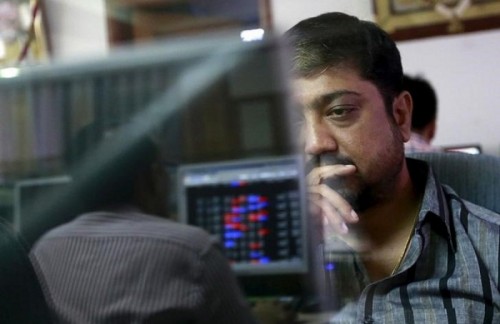India vs. Global Economies: How India Continues to Outperform Amid Market Volatility By Dr Vikas Gupta, OmniScience Capital

Below the Quote on India vs. Global Economies: How India Continues to Outperform Amid Market Volatility By Dr Vikas Gupta, OmniScience Capital
The one major event which has happened over the last couple of months is the election of Donald Trump as the next US president. He is known to have very strong views on what is good for the US as a country. He has been threatening actions against other countries where he thinks there is a trade imbalance inimical to US interests. He has been strongly advocating the use of high tariffs to counter trade imbalances. This has caused concern in investor circles since the belief is that the tariffs will lead to higher prices for goods to US citizens. This would incite inflation. Higher inflation would prevent the Fed from cutting the rates further in 2025.
With this kind of uncertainty, the institutional investors/FIIs, decided to play it safe and park money in the money market funds or short-term fixed income asset classes until the actual policy and its impact are clear.
However, there are flaws in this reasoning too. 30-year US treasuries are around 5% yield. Typically, for a 2% inflation economy these have been close to 3.5%-4%. Definitely, no one can be speculating that long-term inflation rates will be that high. Especially where the World, anchored by China, has huge overcapacities, China is entering a deflation cycle, and the World is moving towards AI, Robotics and Industry 4.0, it doesn’t make sense to assume high long-term inflation over 10 and 30 years. Thus, the bond market pricing is clearly wrong.
But an understandable idea is that the institutions don’t want to take risk and hence in an environment of seeming uncertainty they are getting out of all asset classes; and this includes India.
As an actionable, our conclusion is that this is panic selling by FIIs due to their own averseness to uncertainty. Fundamentally, the Indian economy is quite strong and even the global economy is reasonably strong. Trump’s promise to reduce non-productive government spending through the Department of Government Efficiency is likely to reduce the supply of US treasuries, making the bond yields fall eventually. This means that as Trump’s actions come into play, the bonds are likely to rise, which, typically, means the equities are likely to rise even faster. There are other fundamental economic factors which could drive the US equities higher. Further, a low interest rate and rising equities are likely to bring back the FIIs in the next few months.
Indian Markets Narrative
Nifty and Sensex are down around 12% from September onwards. Several sectors are down even more. FIIs have been selling for most of 2024. From October 2024 until January 2025 they have sold about $23 billion in total.
The narrative is that the Indian economy is not doing well and hence FIIs are selling. And there is data which seemingly supports the view that the Indian economy is not doing well. India’s GDP for Q2 FY25 came in at 5.4%, below the 6%-8% range typical for the Indian economy. The overall earnings growth of Indian companies came in at around 4% year-on-year. However, it is worth noting that ex-metals and oil & gas, the earnings growth was in double digits.
The slow growth in several FMCG companies reinforced this narrative that the buying power of the Indian consumer is weakening due to high inflation. Also, the INR depreciation against the USD is adding fuel to the fire. However, we think the reality is quite different. As a scientific investor let us try to decipher what is the reality with actual data.
Since, the issue is the markets falling due to FII selling which is supposedly happening due to a weak Indian economy, let us look at some data which can confirm or deny this.
Now coming to the GDP growth rate being the dampener. Let us look at the GDP data for all the major economies.
First let us look at the top 10 largest economies based on the IMF data.

India is the 5th largest economy and likely to beat Japan within a year and Germany by 2027 to become the 3rd largest economy in the world. The first data point is how is India’s GDP doing vis-à-vis other economies. For that we use the data from the latest UN 2025 report which provides, both, the real GDP and inflation in 2024 for various countries. We have looked at the data for the top 10 economies in the world by GDP.

This clearly debunks that the Indian economy is weak. In fact, it is the fastest growing economy in the world growing at 6.8% with only China coming close with 4.9%. Rest of countries are ranging from -0.2% to 3%.
Similarly, the inflation data for 2024 shows that India was well within the RBI’s target range of 4% to 6%.
Next, let us address the issue of INR depreciation against the USD. This has brought up discussions about how the Indian economy is not doing well and that is getting reflected in the weak INR vs the USD. To decipher the truth better, let us look at how INR has fared versus major international currencies.


The above table shows that the INR has depreciated against the USD by around 4% for the year. Half of the depreciation, 2%, has been in just the last one month.
However, when one looks at the INR vs other major currencies, the INR has appreciated against all of them on a 1-year basis ranging from an appreciation of 0.61% to 4.07%. Even on a 1-month basis, the INR has appreciated from 0.23% to 1.96% against all the currencies. The only exception is the Canadian Dollar against which it has depreciated by 0.71% on a 1-month basis.
Thus, the INR is quite strong against most international currencies and only the USD is an exception.
The above data points strongly, and scientifically, debunk the narrative that the Indian economy is weak. Neither the GDP, nor the inflation, nor the currency is showing any signs of weakness.
Maybe the GDP forecasts are weak? We look the forecasts from UN Report 2025.
Now let us see what the forecasted growth rates of these economies are according to the latest UN data.

As can be seen from the above table the fastest growing large economy is India with 6.6% and 6.7% growth rates for the next two years respectively. Only China comes close, but it is still nearly 200 bps slower, while all the other major economies grow at 2% or lower.
So, India remains the fastest growing major economy across the world. India’s inflation is projected to remain benign at around 4% according to the same UN report. (World Economic Situation and Prospects 2025). India’s currency is appreciating against most others except USD.
Looking from all angles, it is obvious that India remains one of the few economies across the world which is forecasted to have high growth and low inflation. It should be clear that the markets falling and the currency depreciation against the USD are not indicating a weak economy. Rather the currency is appreciating against all other major currencies except the USD and the economy is stronger than any other major economy.
This means that FIIs are not selling out from India because the economy is weak. But there should be some other reason.
Scientifically proceeding, we can explore what is happening to other stock markets around the world. For the sake of comparability, we will use data from US domiciled ETFs denominated in USD investing in different countries.

As can be seen the 1-month returns across all the countries, from developed to emerging markets, are negative. And this includes the USA itself. While one can see that the 1-year returns are not so one-sided. It can be inferred that while the 1-year returns were probably impacted by lot of country specific factors, the 1-month returns seem to be more impacted by some common factor.
We can conclude that the FIIs are selling from all the markets in the last one month, including the US equities.
Now let us check out the bond markets.

The bond markets are clearly showing huge selling in the last one month. Most of the one-year returns are reflecting the one-month returns, showing that the selling is happening mostly in the last one month.
Above views are of the author and not of the website kindly read disclaimer
























